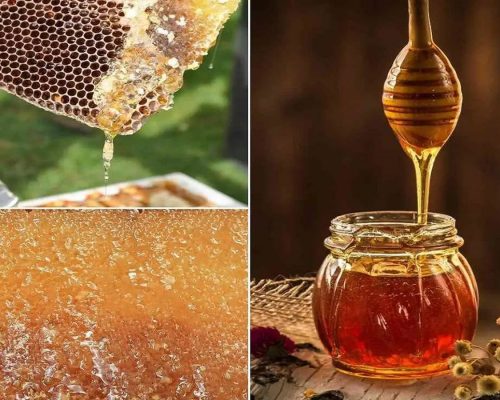Project Report For Honey Processing
Introduction
Project Report For Honey Processing is as follows.
Honey eating has a long history in human history. It has been employed in a variety of foods and beverages as a sweetener and flavouring. Honey has been known for its nutritional and medicinal properties since ancient times. Carbohydrates, such as fructose, glucose, disaccharides, and oligosaccharides, are the most essential components of honey, while components such as maltose, isomaltose, maltulose, and sucrose give honey its sweet flavour. It also includes amylase, oxidase peroxide, catalase, and acid phosphorylase, as well as anderosis and panoz.
Honey is also high in amino acids, minerals, antioxidants, and phytochemicals. Many of honey’s claimed biological characteristics, such as antioxidant, antibacterial, antifungicidal, anti-inflammatory, hypotensive, antiproliferative, and hepatoprotective capabilities, are connected with the presence of these components. For thousands of years, honey has been employed in medicinal therapies.
This substance has been described as a potential agent for wound healing, including leg ulcers and eyes, as well as skin problems, in vitro and clinical investigations. The viability of potentially helpful Lactobacillus reuteri and Bifidobacterium longum discovered in the human gut was shown to be improved.

Process Of Honey Processing
Extraction: The first step is to extract the honeycombs’ honey. Beekeepers utilise specialised equipment such as honey extractors to remove the honey from the honeycomb frames. A jar holds the extracted honey.
Settling: The honey is let to settle in a settling tank or drum after extraction. This causes any air bubbles or contaminants to rise to the surface, while the pure honey settles to the bottom. It normally takes several days for the honey to settle so that it is clear and free of particles.
Filtration: After the honey has settled, it is filtered to eliminate any leftover contaminants, such as wax particles or bee pieces. Filtration methods include gravity filtration, mesh filters, and tiny sieves. This procedure contributes to a smooth and transparent honey consistency.
Heating: Some honey processing facilities opt to heat the honey to a specified temperature in order to liquefy it and increase its flowability. Heating also reduces crystallisation and aids in the elimination of any leftover moisture. However, excessive heating might harm the honey’s natural enzymes and fragrance.
Packing: The honey is ready for packing after filtering and boiling (if necessary). It is put into containers including jars, bottles, and squeeze bottles. Proper labelling is used, which includes information on the origin of the honey, nutritional information, and any special certifications or quality criteria.
Quality Control: Strict quality control procedures are used throughout the honey processing process. This covers moisture content, purity, and a variety of quality indicators. Honey that does not meet the acceptable requirements may be discarded or processed further to increase its quality.
Market Potential Of Honey Processing
In 2022, India’s honey market had a value of INR 23.3 billion. the market will expand at a compound annual growth rate (CAGR) of 8.4% from 2023 to 2028, reaching INR 38.8 billion.
Honey is a sweet, viscous, golden-colored liquid made by bees in their honey sacs from floral nectar. It contains antioxidants, vitamins, and minerals including niacin, thiamine, pantothenic acid, and riboflavin. It aids in the maintenance of healthy cholesterol levels, improves memory and focus, and fortifies the immune system. Aside from that, honey is utilised as a natural sweetener in fermented drinks, wine, and other beverages throughout India due to its antibacterial, anti-microbial, and anti-inflammatory characteristics.
The use of honey as a component in health and beauty products is growing in popularity. Honey may be found in drinks, processed meals, jams, and jellies. The ease of access to a diverse variety of these items, along with the product’s capacity to impart a desired flavour in food and beverage products, is boosting market demand.
Furthermore, honey has a variety of medicinal properties, including the capacity to increase metabolic activity, manage blood pressure, reduce the risk of diabetes, and even cure burn wounds. As a result, it is widely employed in various applications other than food and drinks, including as cosmetics and medicines, which are expected to boost market development.
Project Report Sample On Honey Processing
Need Help?
Create 100% Bankable Project Report

